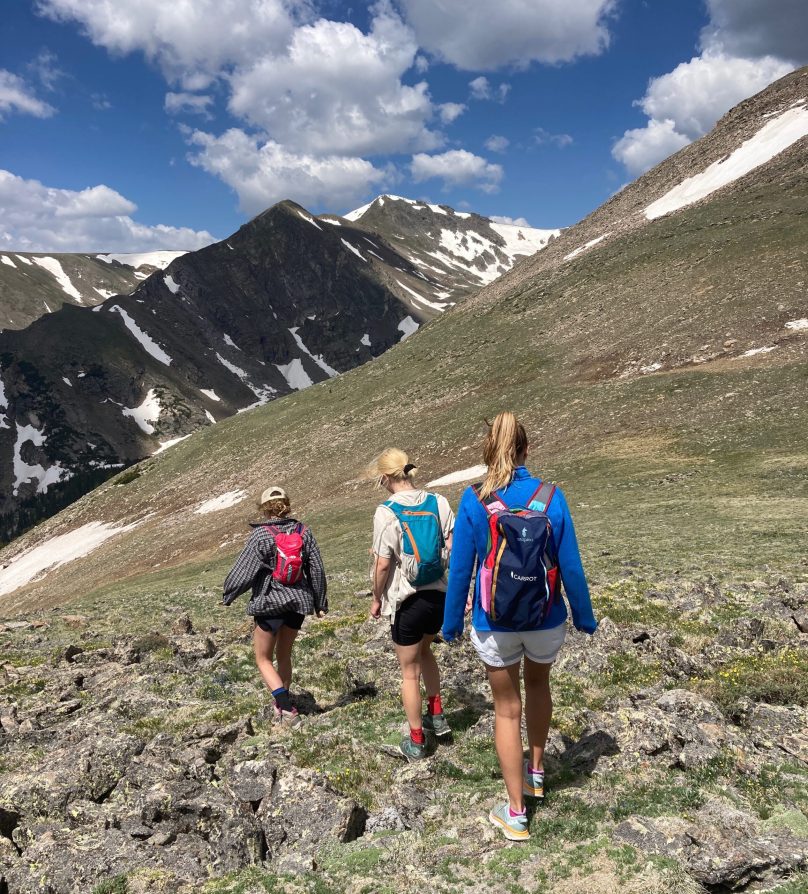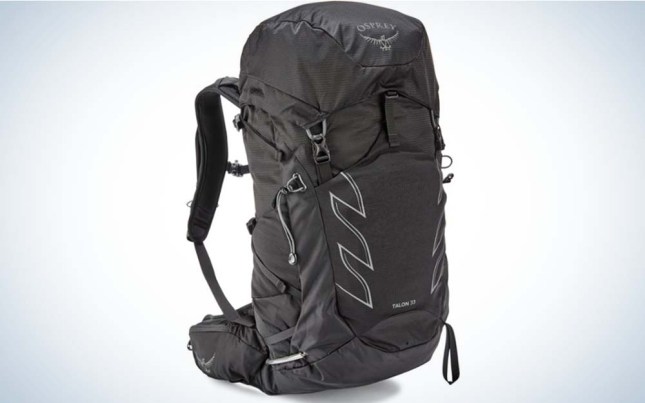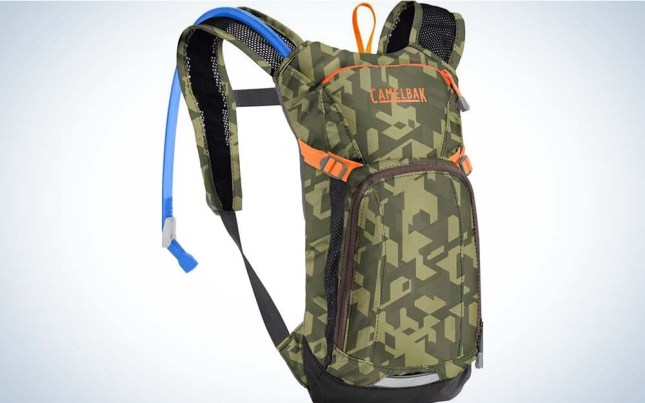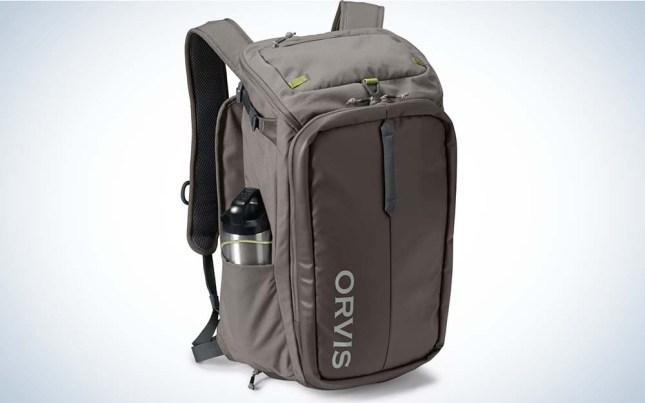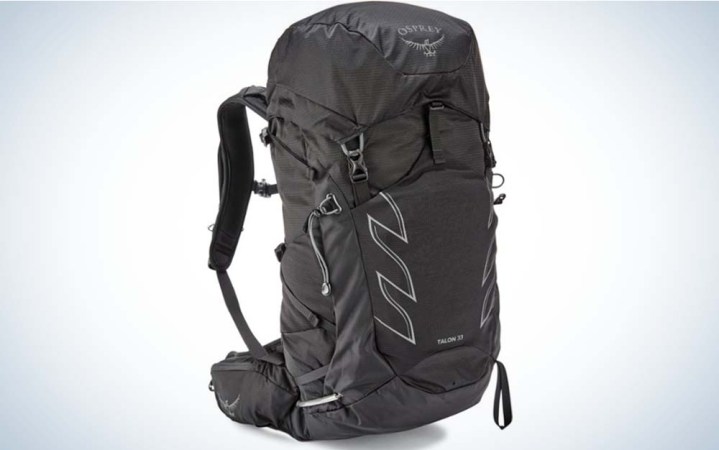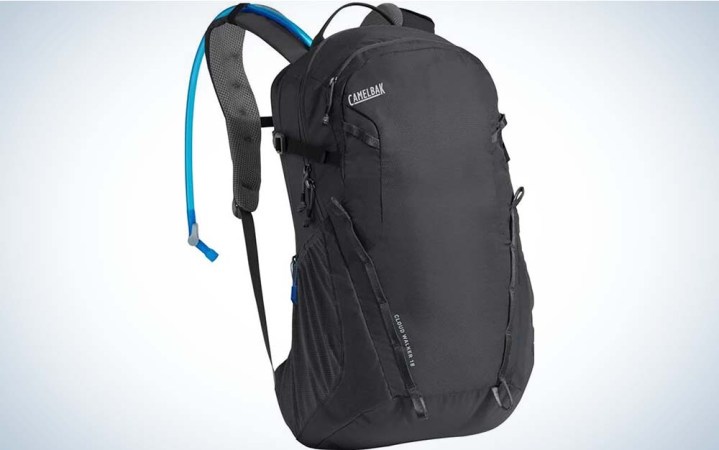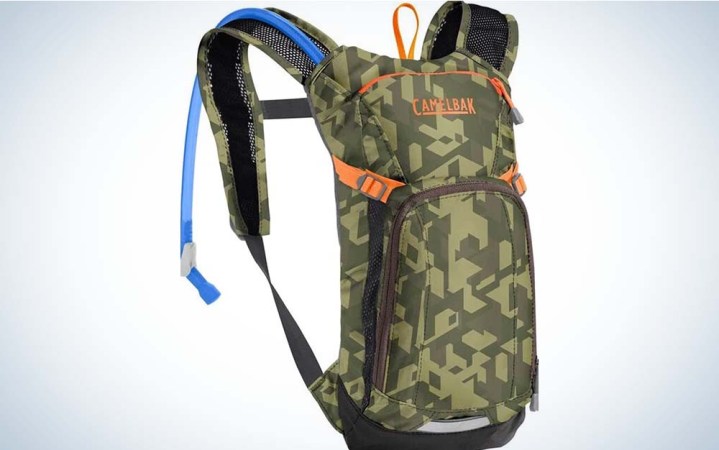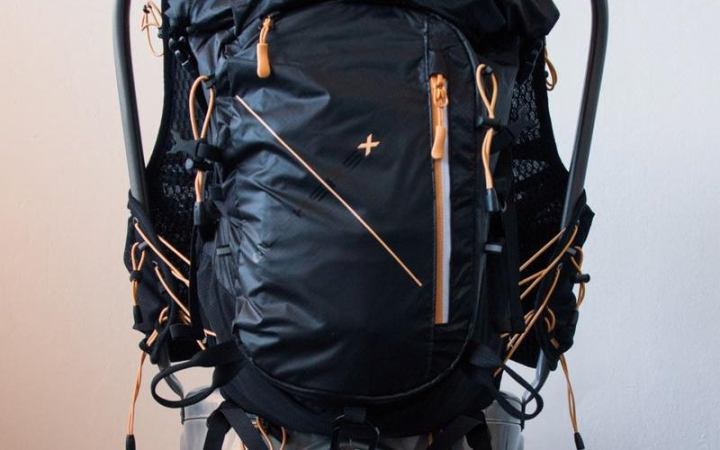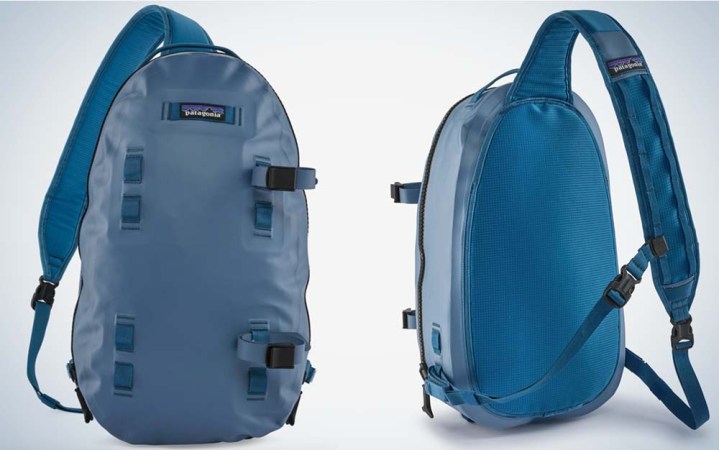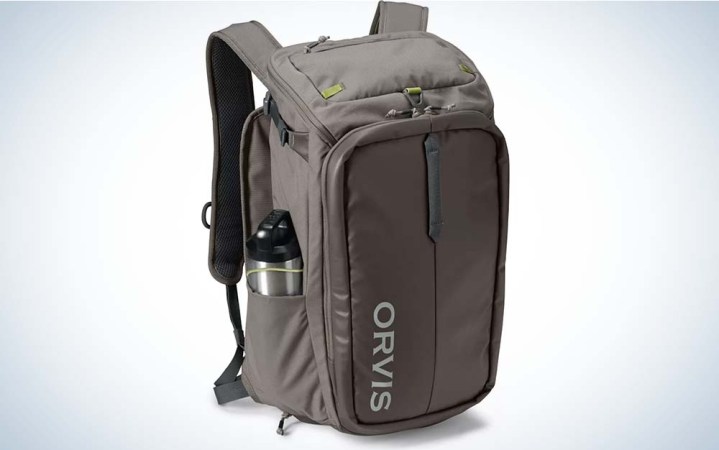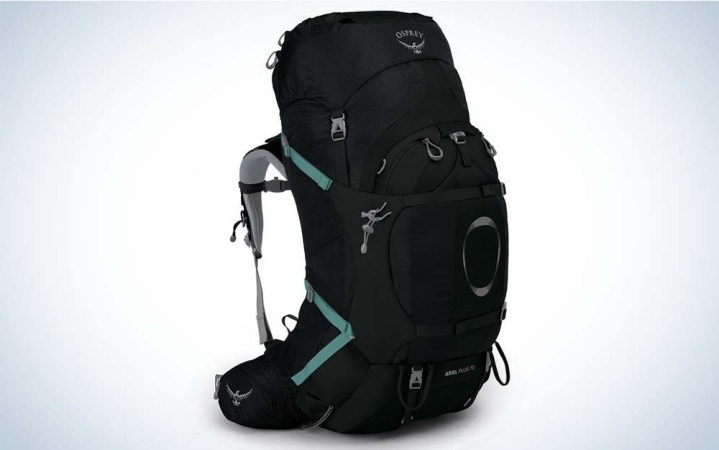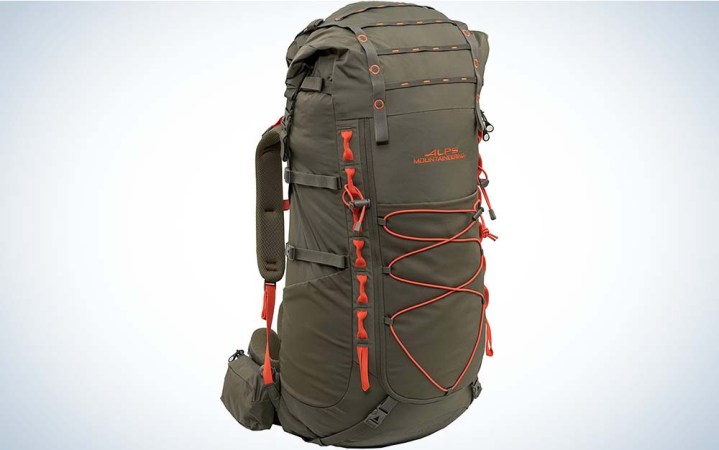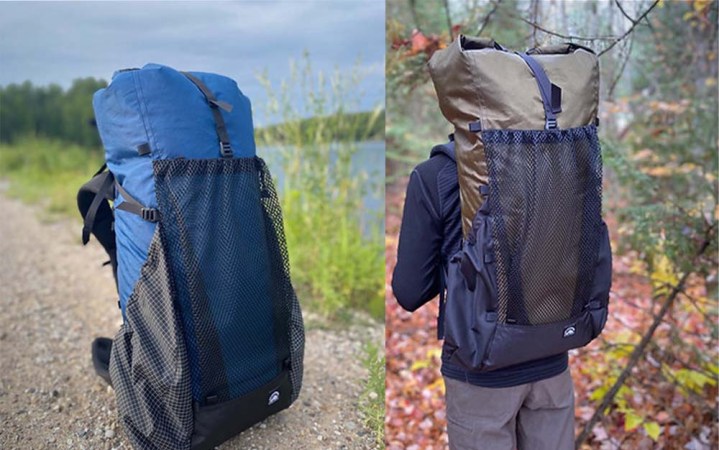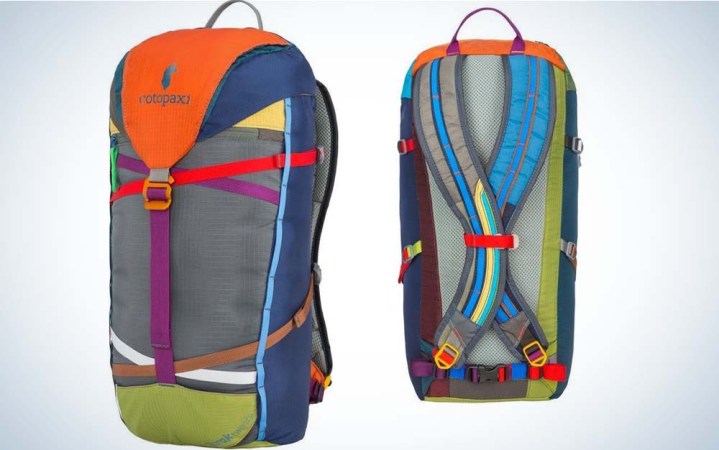We may earn revenue from the products available on this page and participate in affiliate programs. Learn More ›
From climbing a mountain to a sunset walk in the park, “hike” definitely means a lot of different things, and your gear list reflects that. And it all starts with having a durable, comfortable backpack. I’ve been hiking and backpacking for pretty much my entire life and tried out a range of backpacks to figure out what does and doesn’t work for me. Whether you’re heading out for the first time or looking for an upgrade, here’s my list of the best hiking backpacks for the style, size, and function you’re looking for.
- Best Overall: Osprey Talon 33
- Best Hydration Pack: CamelBak Cloud Walker 18
- Best for Kids: CamelBak Kids’ Mini M.U.L.E. 50oz Hydration Pack
- Best Lightweight: Deckers X Lab NVRSTP
- Best Sling: Patagonia Guidewater Submersible Waterproof Sling 15L
- Best for Fishing: Orvis Bug-Out Backpack
- Best for Backpacking:
- Sustainable Picks:
Toward the end of this article, I will give you more details on how to pick the best hiking backpack for you; so if you don’t know where to start, it’s best to figure out what you’ll need a pack for and work from there.
Best Hiking Backpack Overall: Osprey Talon 33
Key Features
- Sizes S/M, L/XL
- Weight: 2 pounds, 5 ounces (M/L)
- Hip belt with two pockets
- Frameless
- Two tuck-away ice axe attachments and trekking pole attachment
- External hydration reservoir
- Top “brain” with underneath mesh pocket
- Large stretch mesh pocket
- Contains recycled materials
Why It Made the Cut
The Talon 33 is the perfect size for any hike, and has a supportive frame with an array of easy-access straps and pockets.
Pros
- 33L is a great size for storing layers and gear
- Adjustable to fit your torso
- “AirScape” mesh backpanel keeps you cool
- Easy to keep organized
- Comfortable even when partially packed
Cons
- S/M back panel still may be too long for smaller women
- Straps are a little long, even when bag is at full capacity
- Does not include rain cover
Product Description
If you told me I had to only pick one backpack as the best hiking backpack to keep out of my embarrassingly large collection, it would be the Osprey Talon 33. I find a 33L backpack to be the sweet spot in terms of size, if the pack is designed correctly. I’ve stuffed my S/M Talon 33 full for an overnight backpack, but also love bringing it with me on day hikes. It’s extremely important to me to carry extra layers, food, water, and a first aid kit in my backpack, so the extra room is always welcome (especially when packing a travel rod). And the kind of gear this Osprey hiking backpack can carry is very versatile. It securely holds hiking poles, a snow axe, a water bladder, and an array of smaller items outside of your main compartment, while still feeling tight and secure to your body. It’s also a solid price for such a large and versatile backpack.
Another great overall hiking backpack: REI Co-Op Traverse 32
Best Hydration Pack: CamelBak Cloud Walker 18
Key Features
- Comes with 2.5-liter Crux™ reservoir
- Weight: 1 pound 7 ounces
- One main pocket, a zipper front pocket, and two side bottle pockets
- Got Your Bak Lifetime Guarantee
Why It Made the Cut
The Cloud Walker 18 has a great water capacity for day hiking, and is an easy, no-frills small backpack.
Pros
- Breathable and well ventilated
- Compact and comfortable
- Reservoir tube clips into right buckle to stay secure when hiking
Cons
- No waist strap
- Would prefer a zipper side pocket instead of two bottle holders on a pack designed for a reservoir
Product Description
Sometimes you don’t need a huge bag on a day hike. Especially for a short day where water is your main gear, this CamelBak hiking backpack is a best hydration pack. My favorite part about the Cloud Walker 18 is definitely the plastic clip on the right shoulder strap that keeps the reservoir tube secure when walking.
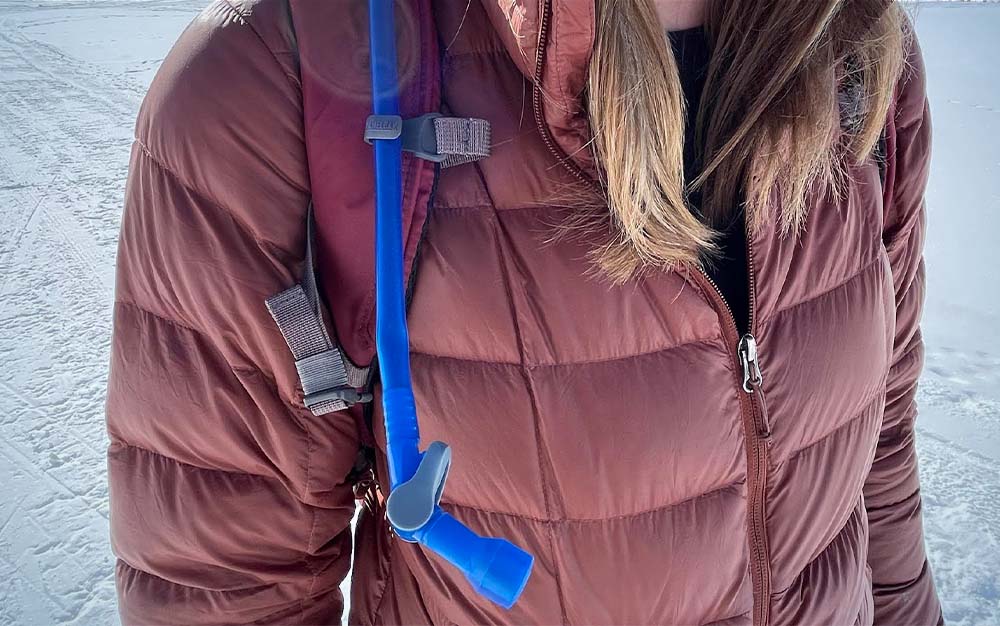
CamelBak makes smart, simple, and well-designed hydration packs that work great in a lot of different environments. If you don’t need a ton of gear, 18L is a near-perfect size for a layer or two, some snacks, a full reservoir, and small first-aid kit. I’ve even fit a smaller backup 1.5L reservoir in the pack for a longer day. Just be aware that the pack doesn’t have a waist strap, so if you overstuff the Cloud Walker, there’s going to be strain on your shoulders.
Best Kids’ Hiking Backpack: CamelBak Kids’ Mini M.U.L.E. 50oz Hydration Pack
Key Features
- 50 ounce pack
- Comes with a 1.5L reservior
- One small pocket, one larger body pocket, one body compartment
- Six fun colors and patterns
- A chest strap with whistle and reflective strips
Why It Made the Cut
The CamelBak Kids’ Mini M.U.L.E 50oz is great for kids to carry their own water and gear, and can even be used by smaller adults for carrying a super light load on a day hike.
Pros
- Super compact and easy to organize
- Wide range of bright colors and cool designs
- Fits a large bladder
- Great lightweight option for adults
Cons
- Difficult to get full bladder into pack
- Hard to stuff thicker layers in the body compartment
- Could benefit from a waist strap
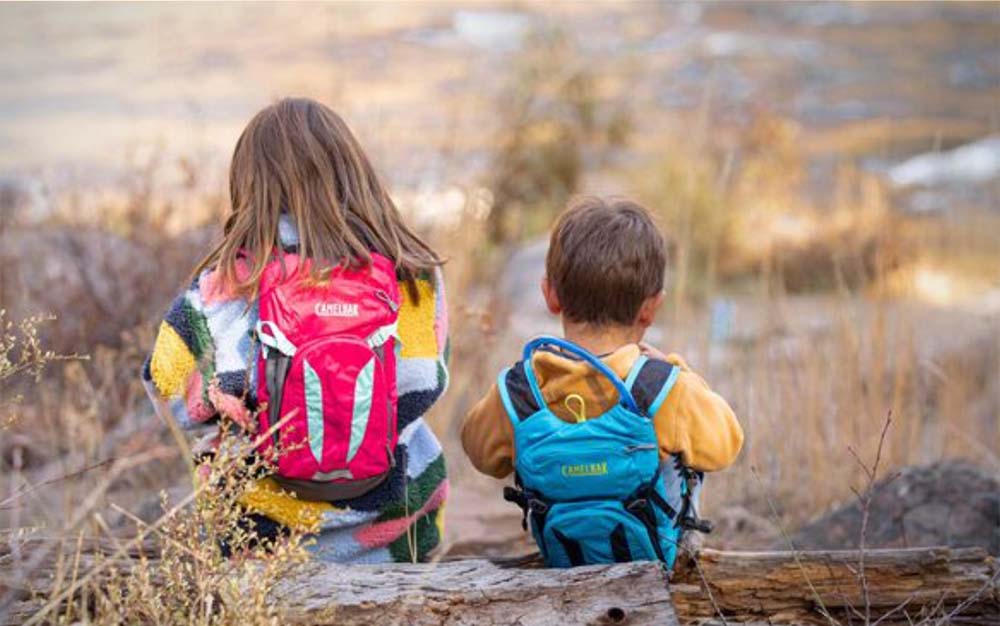
The Mini M.U.L.E. is great for kids of all sizes. 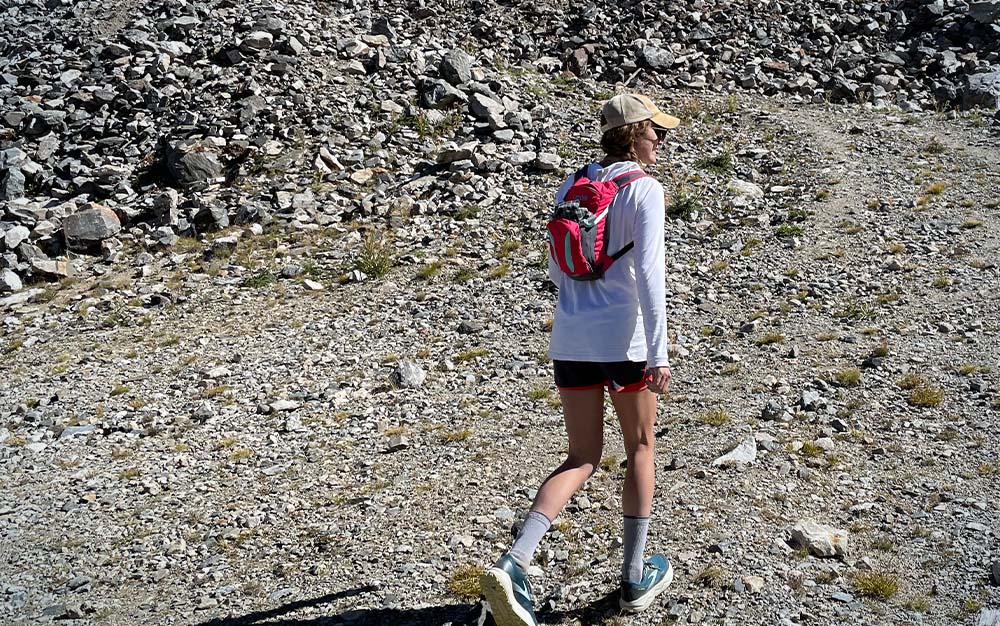
The Mini M.U.L.E. can also double as a small adult hiking or running pack.
Product Description
The Mini M.U.L.E. is the best small hiking backpack because CamelBak takes everything that’s great about their standard hydration packs and just shrinks it. When you look at this kids’ pack and the Cloud Walker 18 side by side, they’re of an extremely similar quality, style, and fit—one’s just bigger. I think this is really important when teaching kids to be autonomous in the outdoors (like carrying their own gear and regulating their own hydration), and also to offer a mini, high-quality CamelBak that can be used to carry a (smaller) adult’s water, phone, and keys on a trail run or lightweight hike.
Just look at the reviews from parents on CamelBak’s website. Between the fun colors and lack of stopping on hikes to take a sip of water, this backpack is a hit.
Best Lightweight Hiking Backpack: Deckers X Lab NVRSTP
Key Features
- Weight: 1 pound, 5.7 ounces
- 25 liters (40 with roll top and extended top pack)
- 19 pockets (nine in front, 10 in back)
- Built-in wet bag
- Pole holders and carabiner assist
- Hydration bladder pocket
Why It Made the Cut
The NVRSTP action pack from Deckers X Lab is the ultimate hybrid pack. It’s a strong vest/pack hybrid option for ultralight backpacking, long runs, and quick trips in the backcountry.
Pros
- Ultra lightweight and snug to body
- Organized and great for holding fishing rods
- Ideal for fastpacking and high-alpine scrambling
Cons
- Cluttered front if you aren’t using all pockets
- Excess cords
- Things fall out of “C-”shaped main pocket if opened when wearing
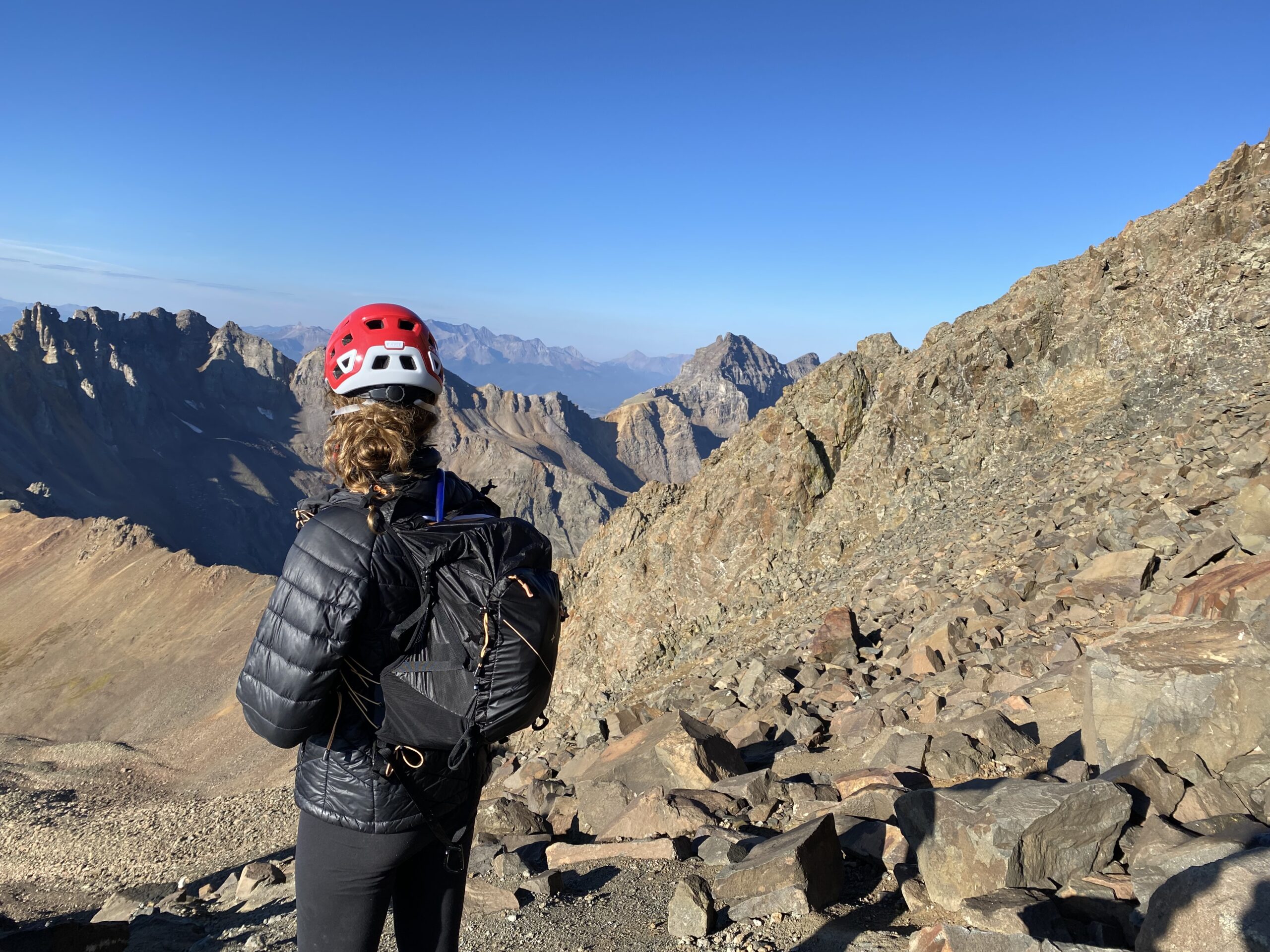
Product Description
For a seemingly small pack, the NVRSTP offers a lot to a very specific type of endurance athlete. Deckers X Lab calls it “the perfectly balanced body mullet,” and I can’t think of a better way to put it. The nine pockets in the running vest “business in the front” keep things easy to reach, and there are straps and side bungees to keep the pack snug to you, with 10 larger side and back pockets for your bulkier gear (including a roll-top wet bag, a removable top pocket, and a bladder compartment).
It’s a hiking pack and a running vest that is truly unique in the market. I’ve run, biked, climbed, and hiked with this pack, and it’s my go-to for any time I am moving quickly, and certainly for any mountains where I need to use my hands and not feel like I’m being pulled backwards.
Best Sling Hiking Backpack: Patagonia Guidewater Submersible Waterproof Sling 15L
Key Features
- Body and webbing made of 100% recycled nylon
- Back panel and lining made from 100% recycled polyester
- Fully waterproof and submersible
- Back panel and shoulder strap do not absorb or retain water
- Vert compatible design
- Weight: 1 pound, 7 ounces
- Fishing rod holder and net pocket
- Sling can be worn on left or right shoulder
- Removable organizer for inside or outside the pack
Why It Made the Cut
This waterproof sling pack is durable, extremely waterproof, and is significantly more comfortable and functional than other sling packs I’ve hiked with.
Pros
- Fully submersible
- Extremely supportive for a sling
- Great for carrying lightweight fishing gear
Cons
- Sling isn’t everyone’s style of choice
- Only has a main body pocket and internal organizer
Product Description
One of my biggest issues with sling packs is that they don’t feel secure on steep hikes and get uncomfortable on my shoulder after a short period of time. This Patagonia hiking backpack however, has a strong padded shoulder strap with a second strap that adds support across your body, and it’s easy to switch the side on which you’re carrying the sling. There’s a reason Patagonia can’t keep this backpack in stock. It’s such a strong multi-purpose backpack for fishing, everyday use, and day hikes, and it looks great, too. If you’re not carrying too much gear with you, this is a great smaller option for a day hike that ends in an afternoon fishing an alpine lake.
Best Hiking Backpack for Fishing: Orvis Bug-Out Backpack
Key Features
- Made from 100% recycled Cordura ECO fabric
- Top and side-entry access
- Net and rod storage
- Internal pocket for hydration bladder or laptop
- One water bottle side pocket and an internal hydration reservoir
- Weight: 2 pounds, 2 ounces
- 20L capacity
- Chest and hip straps
- Compatible Chest/Hip Pack snaps onto the front of the Bug-Out Backpack to allow you to have all of your gear near-at-hand while out for the day
Why It Made the Cut
The Orvis Bug-Out Bag is a quality hiking backpack that just so happens to be great for fishing. It’s durable, high quality, and comfortable to carry to alpine lakes.
Pros
- Extremely organized
- Comfortable and supportive for long hikes
- Versatile
Cons
- Waist strap could be more padded and supportive
- Even when tightened all the way, the backpack still fits loose on smaller adults
- Rod tube extension is a little tight
Product Description
As an avid hiker and beginning angler, I really like this fishing backpack because it is multi-functional. It’s waterproof and has a lot of pockets, keeping fishing gear and other items well organized. I’d highly recommend this backpack if you have to hike a long way to your fishing spot and want something more geared toward rugged terrain than your standard fishing backpack. That being said, if you’re someone with a smaller frame, make sure this backpack isn’t too big on you and doesn’t rub when you hike. While I’d love to see the Bug-Out Bag in a smaller or women’s-specific size, it’s a great hybrid between hiking and fishing that I haven’t seen before.
Best Backpacking Backpacks
While this guide is meant to help you find the best backpack for hiking, here are my picks for the best overall backpacking packs for general use if you want to size up for any reason, or are looking to take a weekend trip to see if backpacking is for you.
Read Next: The Best Backpacking Stoves
Osprey Aether and Ariel
The Osprey Ariel was my first backpacking pack when I was 14, and I’d blanket-recommend it for anyone looking to get into backpacking or stick to a classic style. The Aether (men’s) and Ariel (women’s) come in standard and Plus models in 55-85L sizes. This pack does everything you want it to: it carries heavy loads, sits comfortably, and stays organized. Most things about this pack are customizable, and the pack’s designed to carry loads close to your body while keeping the back breathable. You can’t go wrong with Osprey.
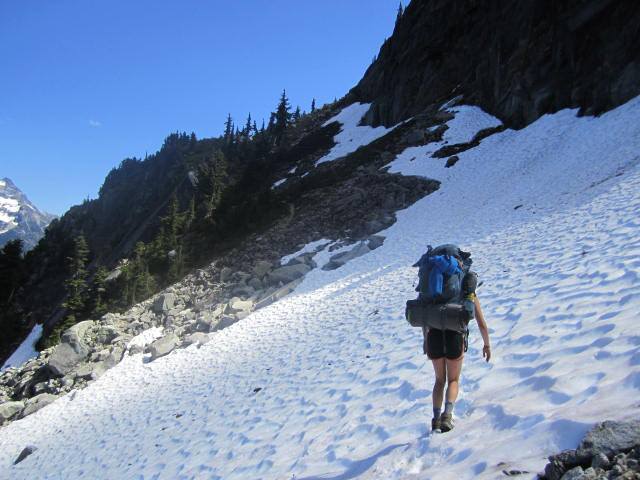
ALPS Nomad RT 75
A 75L pack certainly isn’t small, which is why I think this ALPS Mountaineering rolltop pack is a great all-purpose backpacking pack. The rolltop feature allows the pack to shrink down to 65L or expand to 85L, and has an adjustable torso, as well as a removable waist strap (though I wouldn’t recommend it). It has an easy-access outer pocket, with two removable waist pockets (I have one attached to the top of my pack to act as a mini brain). One advantage of this pack is its adjustable load capacity, but it does have less pockets than a pack like the Aether/Ariel. I am a huge fan of the rolltop, personally, and don’t find it inconvenient to access my gear due to the front zippers that lead to the main compartment.
SWD Long Haul Internal Frame
This old-school-looking pack is unique as it’s fully customizable per order. You have the choice between a range of fabric colors, 40L or 50L internal pack capacity (rolltop feature can condense down 15L), torso/frame sizes, and hip belt sizes. You can also write additional notes for the manufacturer. While it has less fancy features than the other backpacking packs on this list, if you’re someone who has a hard time getting the right fit, you can really fine-tune this pack to your body. This is definitely one of the most comprehensive customization options I’ve seen. As someone who constantly experiences rubbing and poor weight distribution from having to choose between a too short frame or too wide torso, this pack is incredibly appealing.
This pack also belongs in our sustainable picks, made from EPX200 Ecopak fabric. This material is part of a new, environmentally-friendly line that is made from 100% recycled polyester components. EPX 200 is super durable with a high abrasion resistance, without using any harmful coatings and is still fully waterproof.
Best Backpacks Made From Sustainable Materials
Cotopaxi Tarak 20L Del Dia Backpack
The Cotopaxi Tarak 20L Del Dia Backpack is a perfect size for day hiking, with a hydration sleeve and zippered front pocket, top lid, and stash pocket. Objectively, it’s a super fun backpack to look at, and no two Tarak are the same because each backpack is made with 100% repurposed materials from other companies’ larger production runs to keep fabric out of landfills. Cotopaxi stresses the pack’s “no frills design,” and keeps it simple with three pockets, an ice tool system, minimal toggles and loops, and a removable foam frame sheet. For how thin the fabric is, I’m impressed with how durable it is, and its upside-down triangle shape doesn’t overload your lower back, making it perfect for smaller frames. You can either pick your design or say “surprise me,” and get a unique pack made from whatever repurposed materials are available.

GOT BAG ROLLTOP
The GOT BAG ROLLTOP is the world’s first backpack made of ocean plastic. It has a very thick material, with thick, durable straps and outer and inner pockets to keep things organized and dry. The ROLLTOP is treated with an eco-friendly organic polyurethane coating that is extremely waterproof, and comparably durable to other synthetic backpacks I own. GOT BAG works with 1,500 fishermen in Indonesia to catch and sort ocean plastics, where the usable material is then shredded and turned into pellets, turned into yarn, and then into polyester, a naturally water-repellent fabric. Using this technology, GOT BAG is currently working on a more technical hiking daypack, so look out for new features like a waist strap and water bottle side pockets that may be included in future models.
How to Choose the Best Hiking Backpack
It all starts with where you’re hiking, how far you’re hiking, and in what season you’re venturing out. Are you looking for a do-it-all backpack? Or do you want to invest in a few options for different hikes/situations? If you’re looking for one pack that’ll do it all, definitely go with the Talon, and if you think a 33 is too much for your trips, it also comes in a 22L. If it’s in your budget, my ideal setup would be a smaller backpack or hydration pack for short hikes, a mid-sized backpack (around 30L) for high-alpine hikes to pack layers and extra gear, and a backpacking backpack for weekend to week-long trips.
Once you know what you’re looking for, know your measurements. For a smaller pack, like the Cloud Walker 18L or Tarak 20L, it’s not going to be a big deal, but the larger and heavier your pack/load is, you want to make sure you have a proper fit. You can take your own measurements and do some research online or ask for help at a local outdoors store.
FAQs
If you’re new to hiking or haven’t been successful with previous backpacks, it doesn’t hurt to go to your local outdoor retailer and try things on. Sizing is all about your torso length, not your height, and when it comes to carrying larger loads, you want to make sure your hip belt, shoulder straps, load lifters, and chest strap are all tightened and hitting where they need to be. This video from REI gives you a good sense of how to size a backpack, but it’s always a great idea to talk to a professional if you have questions.
The “most comfortable backpack” depends on who you are and what kind of hiking you’re doing. Even though I recommend the Osprey Talon 33 as my overall pick, it’s not going to be the most comfortable backpack for a quick three miles after work—I find something smaller to be more comfortable. So, it really does depend on your body and activities. Overstuffing a pack without a hip belt is going to feel clunky, and a lot of loose straps and an oversized backpack won’t feel good either.
The hiking backpacks on this list (not including backpacking or kids) range from around $50 to $200+. That being said, a backpack isn’t like a running shoe. There really isn’t a timeline for how long you should use it and how many times you can repair it before getting a new one. There are obviously objective measures of how “good” a backpack is, like the quality of the shoulder straps or how many pockets there are—but at the end of the day, it’s up to you what makes a good backpack. You can find a quality pack at any used gear store or at the REI Garage Sale for well under a new price.
Final Thoughts
I love sports like hiking and running because it doesn’t take much gear or experience to have a good time. You don’t need the most cutting-edge or expensive gear to have a well-prepared and enjoyable hike. But having solid and reliable gear is definitely important. So, know where you want to go, what you’ll want to bring, and what features you prefer and get shopping. You can invest in one of my suggestions in this roundup, or use it as a guide to buying a quality used pack at your local outdoors store.
Once you have your backpack, research your trail, make a gear list, tell someone where you’re off to, and have yourself a day.
